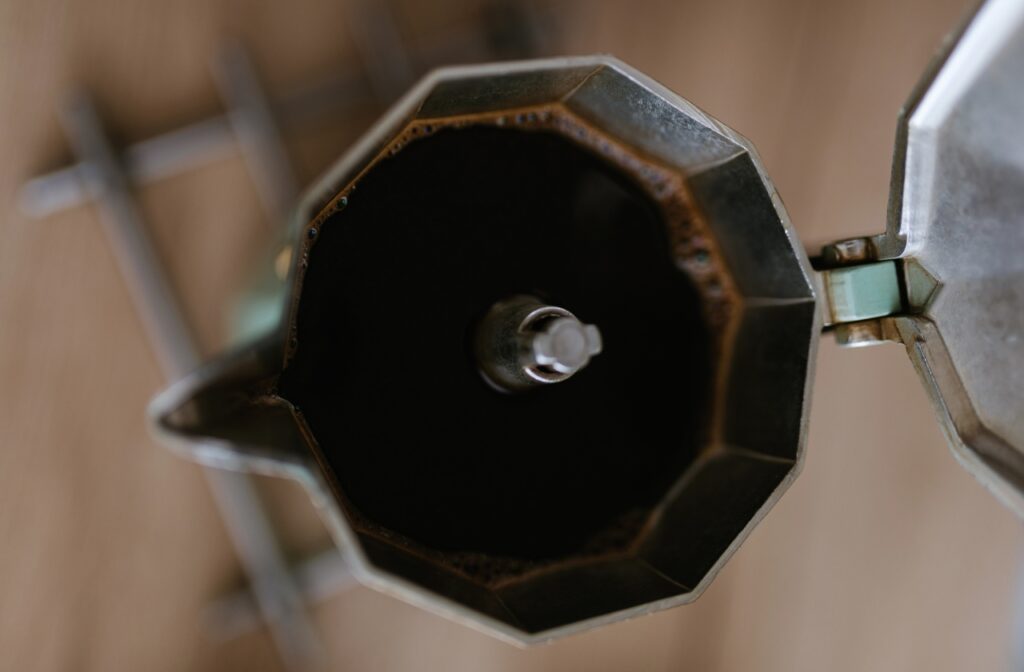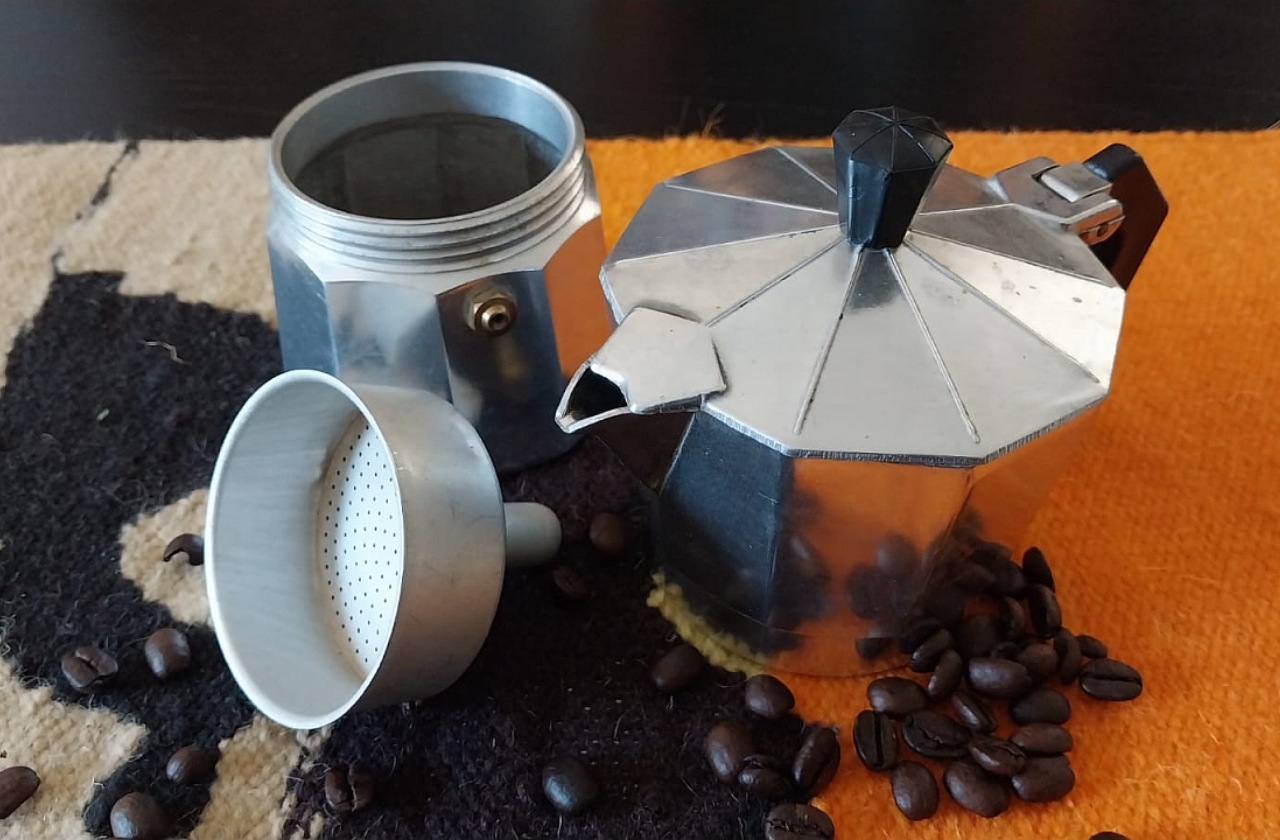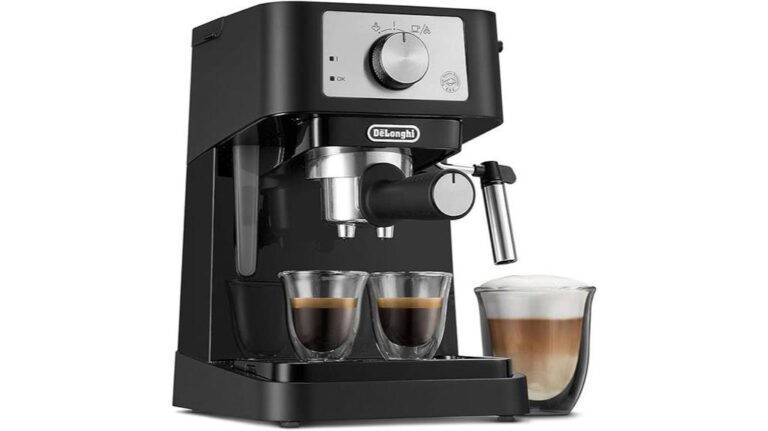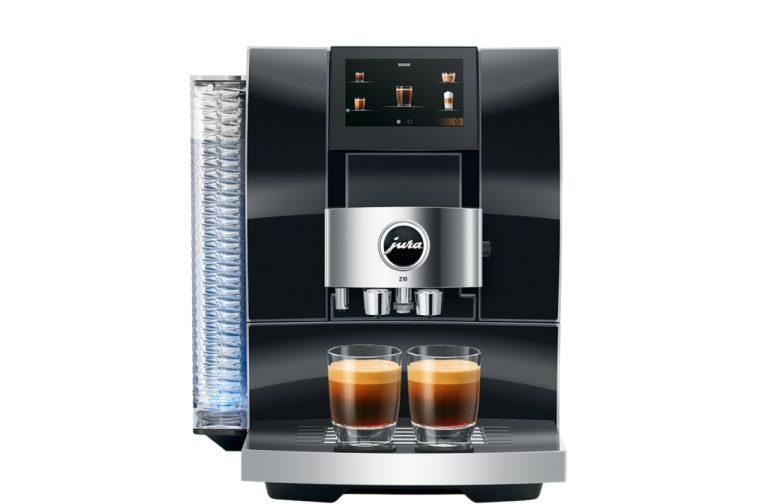How Does a Moka Pot Work? Unlocking Brewing Secrets
The Moka pot, also known as a stovetop espresso maker, is a beloved and timeless brewing device that has been a staple in many households for decades. This ingenious invention allows coffee enthusiasts to brew rich, strong coffee with a distinctive flavor profile right on their stovetop. We will explore the inner workings of the Moka pot and find out how it produces that perfect cup of coffee so many of us crave.
A Moka pot is a stovetop coffee maker that uses steam pressure to brew coffee. Water goes in the bottom chamber, and as it heats up, steam is created. This steam forces the hot water up through the coffee grounds in the middle chamber and into the top chamber as brewed coffee.
Curious about how a Moka pot works? Discover the inner workings of this classic stovetop espresso maker and learn how it brews a rich and flavorful cup of coffee, all in the comfort of your own home. Whether you’re a seasoned coffee aficionado or simply someone who enjoys a good cuppa, understanding the science behind the Moka pot can enhance your brewing experience and help you appreciate the art of coffee making.
Understanding the Moka Pot Design

The Moka pot has been an iconic appliance in the coffee world since its creation in 1933 by Italian inventor Alfonso Bialetti. Recognizable by its unique design, resembling a small metallic pitcher, the Moka pot has brewed countless cups of coffee and become a significant part of coffee culture, particularly in Italy. Its enduring popularity lies in its simplicity and the robust, espresso-like coffee it produces.
How does a moka pot work? The design and brewing process of the Moka pot gives it a unique place in the coffee world. The way the device works imparts different flavors to the coffee due to the differences in the process compared to other methods.
Components of a Moka Pot
The moka pot consists of several sections, each playing a crucial role in the brewing process. Understanding the different components of a moka pot will help you master the art of making the perfect cup of coffee with this traditional method.
- Lower Chamber (Boiler): The lower chamber, also known as the boiler, is where water is poured for brewing. It I usually made of durable and heat-resistant materials like aluminum or stainless steel. The boiler is designed to hold water securely and withstand high temperatures and pressure during the brewing process.
- Filter Funnel (Brewing Chamber): The filter funnel is placed on top of the lower chamber and holds the ground coffee. It typically has a perforated plate or mesh filter at the bottom to separate the coffee grounds from the water below and a perforated upper plate through which the brewed coffee moves into the upper chamber. The shape and design of the funnel ensure even distribution of heat and proper extraction of flavors.
- Gasket (Rubber Seal): The gasket, made of rubber or silicone, is located between the lower and upper chambers. It provides a tight seal to prevent steam and coffee from escaping during the brewing process. A well-maintained gasket is essential for creating pressure to push the water through the coffee grounds.
- Upper Chamber (Collecting Chamber): The upper chamber serves as the collecting chamber for the brewed coffee. It is connected to the lower chamber via a central tube. As pressure builds up, the brewed coffee is forced upward through the tube into the upper chamber.
- Pressure Valve (Safety Valve): The pressure valve is a safety feature found on some moka pots. It helps regulate the pressure inside the pot, preventing an excessive build-up that could lead to accidents. The valve releases excess pressure, ensuring a safe and controlled brewing process.
- Handle and Lid: The handle and lid are essential for safely handling the moka pot. The handle is usually made of heat-resistant material, allowing you to pour the coffee without burning your hands. The lid ensures that heat and aroma are retained during the brewing process, contributing to a flavorful cup of coffee.
With an understanding of the different sections of a moka pot and their roles, you can now confidently brew a delicious cup of coffee using this timeless method. Experiment with different coffee grinds and water levels to find your perfect balance and enjoy the rich and intense flavors that the moka pot can deliver.
The Moka Pot Brewing Process Explained

The brewing process involves three main parts: the bottom chamber, the filter basket, and the top chamber. To begin your moka pot brewing process, pour water into the bottom chamber up to the valve level. Fill the filter basket with finely ground coffee and place it on top of the bottom chamber.
Once the Moka pot is assembled, place it on a stovetop over medium heat. As the water heats up, pressure builds in the bottom chamber, forcing the water to rise through the coffee grounds in the filter basket. The brewed coffee collects in the top chamber of the Moka pot. It is important to keep an eye on the brewing process and remove the pot from the heat source as soon as the coffee starts to flow into the top chamber. Overheating can result in a bitter taste.
After the brewing process, take the Moka pot off the heat, and the coffee is ready to be enjoyed immediately. Giving the coffee a quick stir is recommended to ensure the flavors are well distributed before pouring it into cups. The Moka pot produces a strong and concentrated coffee, similar to espresso, which can be enjoyed on its own or used as a base for other coffee-based drinks like lattes or cappuccinos.
Different sizes and designs of Moka pots are available, catering to various needs – from a single cup to many. The choice of material also influences the coffee’s taste, with some purists preferring the traditional aluminum pots for their unique flavor contribution.
Weird Coffee Tip: Coffee has become an art form with the increasingly detailed and intricate designs that can be achieved with latte art. Learn how to create your own artistic coffee in our article below:
Beginner’s Guide to Creating Stunning Latte Art Designs
How To Brew Coffee in A Moka Pot

Brewing coffee in a Moka pot is a unique experience, blending simplicity with a touch of science. Here’s a step-by-step guide:
- Filling the Bottom Chamber: Start by filling the bottom chamber with cold water up to the safety valve. Using cold water helps in extracting more flavors.
- Adding Coffee to the Filter Basket: Fill the filter basket with finely ground coffee. The grind should be slightly coarser than espresso but finer than what’s used for drip coffee. Level the surface without tamping down the grounds.
- Assembling and Heating: Screw the top and bottom chambers together tightly and place the Moka pot on a heat source. A low to medium heat is ideal to avoid burning the coffee.
- The Brewing Process: As the water in the bottom chamber heats up, pressure builds, forcing the water through the coffee grounds and into the top chamber. As this happens, you’ll hear a gurgling sound, signaling that your coffee is almost ready.
- Completing the Brew: Remove the Moka pot from the heat once the coffee starts entering the top chamber. The brewing process will continue the rest of the way with the residual heat in the pot. Stir the coffee in the chamber to blend the flavors evenly.
During this process, heat and pressure play crucial roles. The controlled pressure, lower than that of an espresso machine, extracts rich flavors and creates a concentrated coffee. This method highlights the coffee’s natural characteristics, producing a distinct and robust cup.
Comparing Moka Pot Coffee to Other Brewing Methods
The Moka pot stands out in the coffee world for its unique brewing style and the distinct taste of the coffee it produces. Here’s how it compares to other popular brewing methods:
- Espresso: While often compared to espresso due to its intensity, Moka pot coffee is brewed under less pressure. This results in a slightly less concentrated flavor and a lighter body than espresso but with a similar boldness and richness.
- Drip Coffee: Drip coffee is generally lighter and more mellow compared to the robust and full-bodied brew from a Moka pot. The Moka pot’s method of extraction also tends to highlight the coffee’s deeper, earthier notes, which are less pronounced in drip coffee.
- French Press: The French Press, known for its full-bodied and rich flavor, brews coffee by steeping grounds in hot water. Moka pot coffee, in contrast, is typically stronger and more concentrated, with a cleaner mouthfeel, as the grounds are not steeped but rather passed through quickly by the pressure.
- AeroPress: Similar in strength to Moka pot coffee, AeroPress coffee is less bitter due to its shorter brewing time. However, the Moka pot offers a unique flavor profile, often described as more complex and robust.
The unique characteristics of Moka pot coffee lie in its brewing method – the balance of heat and pressure extracts a wide range of flavors, making it a favorite among coffee enthusiasts who prefer a strong, rich cup.
Moka Pot Maintenance and Care
Proper maintenance is key to ensuring your Moka pot continues to make delicious coffee and gives you years of coffee-making service. Here are some best practices:
- Cleaning After Each Use: It’s essential to clean the Moka pot after each use. Rinse each part with warm water and let them dry. Avoid using soap or detergents, as they can leave residues and affect the taste of your coffee.
- Dealing with Coffee Oil Build-up: Over time, coffee oils can build up, especially on the filter and the inside of the top chamber. These oils can become rancid and alter the taste of your coffee. A periodic gentle scrub with hot water and a brush can help remove these oils.
- Storing Properly: After cleaning, reassemble the Moka pot and store it in a dry place. Storing it unassembled can prevent mold growth and maintain the integrity of the seal.
- Addressing Common Issues: If you notice your Moka pot isn’t brewing correctly, check the safety valve for clogs and ensure the coffee grounds are the right size and evenly distributed. Replacing worn-out gaskets and keeping the threads where the chambers screw together clean is also important.
Regular maintenance extends the life of your Moka pot and ensures that each cup of coffee is as delicious as the first.
Conclusion
The Moka pot is a significant contribution to the art and science of coffee brewing. Its simple yet effective design has stood the test of time, offering a unique and rich coffee experience that bridges the gap between traditional espresso and modern brewing methods. Understanding the nuances of its operation enhances your brewing skills and improves the quality of the coffee you can produce with this brewing method.
We encourage you to experiment with different grinds, water temperatures, and brewing times to find your perfect Moka pot coffee. It’s a journey that promises rich rewards in every sip. If you are new to the Moka pot coffee experience, it is one we highly recommend to create a fast, easy, top-quality coffee with a basic, easy-to-use, cost-effective brewer.
-
Espresso Express eBook
R180,00 -
From Bean To Brew eBook
R450,00 -
Great Coffee, Made Simple
R0,00









